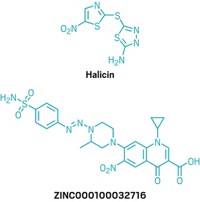Advertisement
Grab your lab coat. Let's get started
Welcome!
Welcome!
Create an account below to get 6 C&EN articles per month, receive newsletters and more - all free.
It seems this is your first time logging in online. Please enter the following information to continue.
As an ACS member you automatically get access to this site. All we need is few more details to create your reading experience.
Not you? Sign in with a different account.
Not you? Sign in with a different account.
ERROR 1
ERROR 1
ERROR 2
ERROR 2
ERROR 2
ERROR 2
ERROR 2
Password and Confirm password must match.
If you have an ACS member number, please enter it here so we can link this account to your membership. (optional)
ERROR 2
ACS values your privacy. By submitting your information, you are gaining access to C&EN and subscribing to our weekly newsletter. We use the information you provide to make your reading experience better, and we will never sell your data to third party members.
Pharmaceuticals
Forecasting liver toxicity before the damage is done
Using toxicity data from thousands of chemicals, researchers developed a computational program that predicts whether a drug candidate is likely to cause liver damage.
by Erika Gebel Berg
March 21, 2016

The liver takes the brunt of the job of clearing drugs from the body, subjecting the organ to a significant toxicity risk. One of the biggest challenges in drug discovery is figuring out which drug candidates are likely to harm the liver before testing the agents in humans. Now, researchers have developed a computational model that compares a drug candidate to those known to cause liver damage and predicts whether the novel drug is likely to do the same (ACS Chem. Res. Toxicol. 2016, DOI: 10.1021/acs.chemrestox.5b00465).
Many pathways are involved in liver toxicity, says Denis Mulliner of Sanofi-Aventis. The standard approach for identifying hepatotoxicity is animal studies, but an agent that is fine for animals may still not be safe for humans. “It’s especially hard to predict, which is a problem for patients,” Mulliner says. Even after rounds of human clinical trials, liver toxicity might only appear after a drug is on the market because damage may occur only rarely or take a long time to develop. Ideally, if scientists could pull potentially harmful drug candidates from the pipeline early, they could avoid embarking on expensive and time-consuming animal studies and human clinical trials, says Mulliner. Computational models that predict a pharmaceutical’s potential toxicity could make drug development faster, cheaper, and safer.
Most of the earlier toxicity models provide only a yes or no answer, Mulliner says. He wanted a more nuanced response that included how confident the model is about its prediction. “Sometimes we get an outcome that says, ‘we don’t know’,” he says. “It’s not very satisfactory, but it’s better than saying there is no problem.” In addition, existing computational approaches use chemical databases that are too small or too homogenous to make good predictions for novel drug candidates.
So Mulliner’s team developed a model that incorporated human and animal toxicity data from a whopping 3712 compounds—three or more times the number used in most earlier models—organizing the data based on each chemical’s molecular properties and the mechanism of the hepatotoxicity. The model looks for common chemical and structural properties that lead to a particular type of toxicity. They then tested their model with 269 proprietary compounds not included in the database. The hepatotoxicity of these compounds had been tested in animals, and the new model correctly identified 72% of the hepatotoxic compounds. The researchers are sharing this database, along with the model’s source code, with the scientific community “to advance the field of predictive toxicology,” Mulliner says.
Gerhard Ecker of the University of Vienna is impressed by the quality of the model’s database. “It’s by far the biggest data set I’ve seen,” he says. “It’s more robust.”





Join the conversation
Contact the reporter
Submit a Letter to the Editor for publication
Engage with us on Twitter